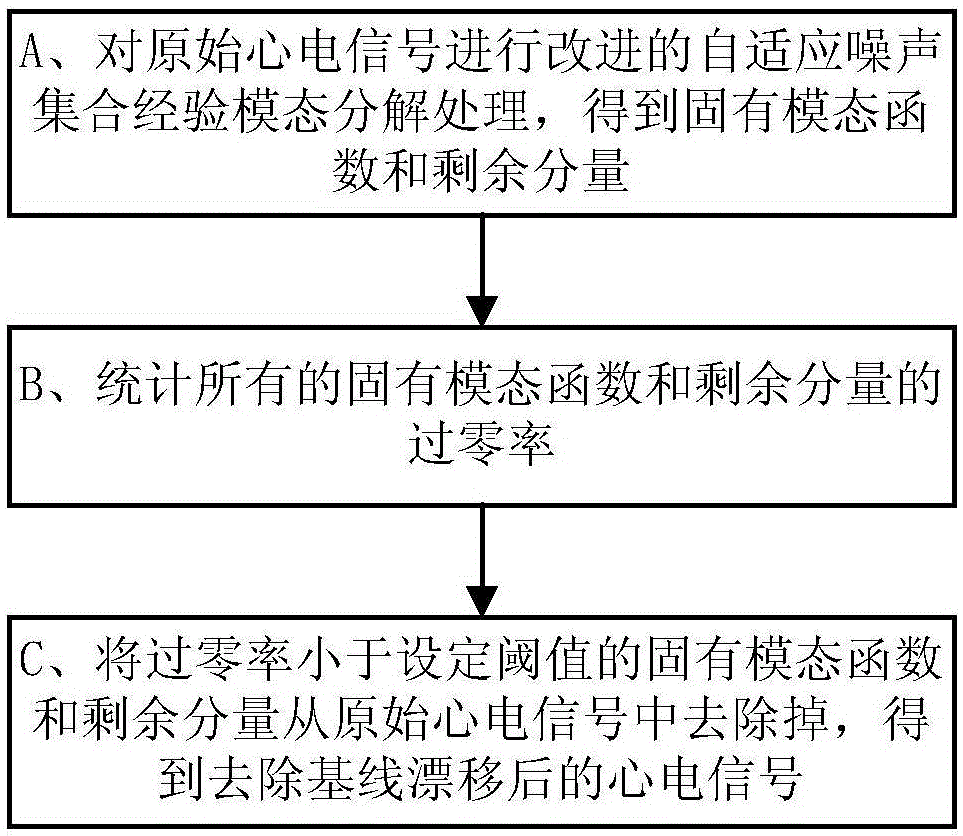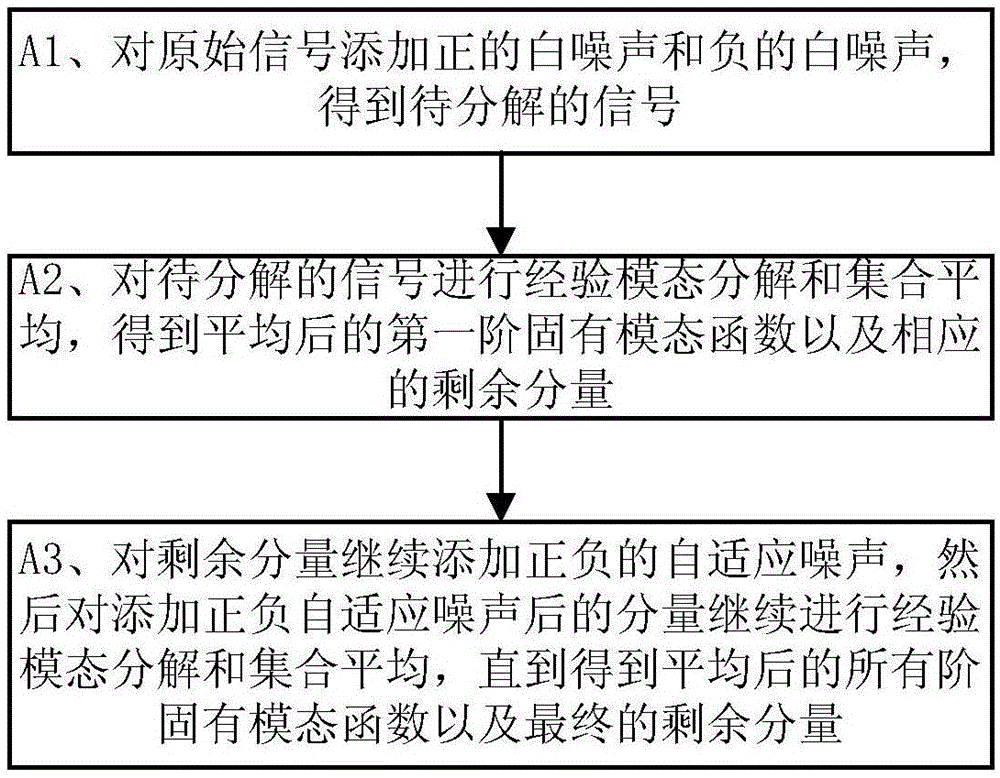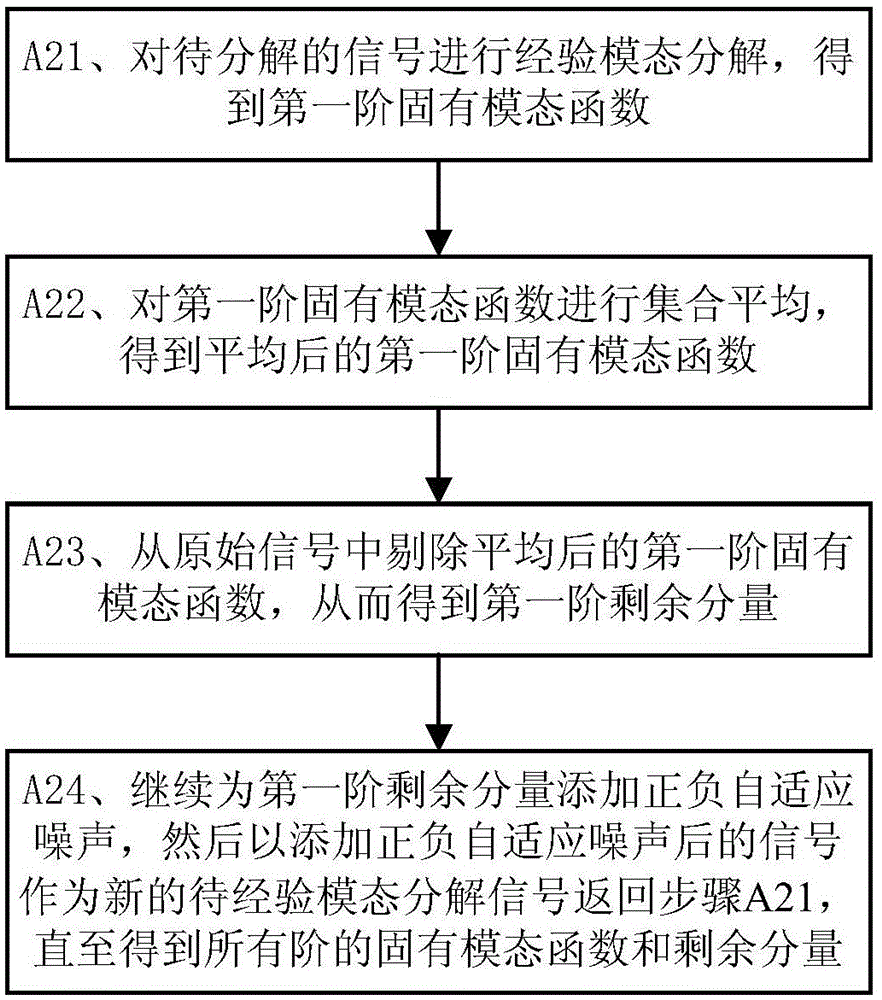Baseline drift correction method for electrocardiosignal
An ECG signal and baseline drift technology, applied in the field of signal processing, can solve the problems of small amount of calculation, loss of physical meaning of decomposition results, difficulty in selecting baseline drift components, etc., and achieve the goal of reducing residual noise and eliminating modal aliasing Effect
- Summary
- Abstract
- Description
- Claims
- Application Information
AI Technical Summary
Problems solved by technology
Method used
Image
Examples
Embodiment 1
[0072] This embodiment describes the relevant theories and specific implementation processes involved in the present invention.
[0073] When the present invention performs empirical mode decomposition and ensemble averaging on the original ECG signal ECG, a series of intrinsic mode functions can be obtained. Among them, small-scale high-frequency signals are separated first, and large-scale low-frequency signals are then decomposed, namely The frequency of the natural mode function roughly decreases from high to low in the order of filtering. The ECG baseline drift signal is a slowly changing low-frequency signal, so it will be decomposed into the last few intrinsic modal functions. Through the zero crossing rate of the natural mode function, the frequency of the natural mode function can be roughly estimated. In this embodiment, the intrinsic modal function with a zero-crossing rate of less than 1.5 is regarded as a baseline drift component, which can be directly removed from ...
no. 2 example
[0096] In this embodiment, the ECG data of No. 18177 in the MIT-BIHNormalSinusRhythmDatabase database is selected, as attached Figure 5 Shown. It can be seen from the time domain waveform diagram that the signal obviously contains baseline drift. The specific implementation process of baseline drift correction on this signal is as follows:
[0097] Applying step 1 to step 7 of the first embodiment of the present invention, the signal is subjected to empirical mode decomposition and collective averaging, and the baseline drift is removed. Among them, the added noise amplitude a k Both are 0.4 times the standard deviation of the signal to be decomposed, and the logarithm of the positive and negative noise is 500. After decomposition, 10 modal components (IMF, that is, intrinsic modal function) and a residual component (RES) are obtained. The results are as attached Image 6 Shown. Calculation attached Image 6 The zero-crossing rate (ZCR) of all the components in, the results are...
PUM
 Login to View More
Login to View More Abstract
Description
Claims
Application Information
 Login to View More
Login to View More - R&D
- Intellectual Property
- Life Sciences
- Materials
- Tech Scout
- Unparalleled Data Quality
- Higher Quality Content
- 60% Fewer Hallucinations
Browse by: Latest US Patents, China's latest patents, Technical Efficacy Thesaurus, Application Domain, Technology Topic, Popular Technical Reports.
© 2025 PatSnap. All rights reserved.Legal|Privacy policy|Modern Slavery Act Transparency Statement|Sitemap|About US| Contact US: help@patsnap.com



